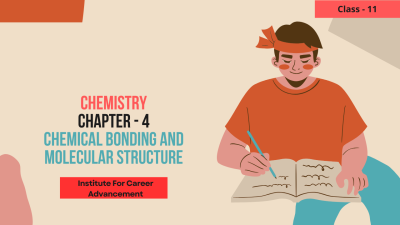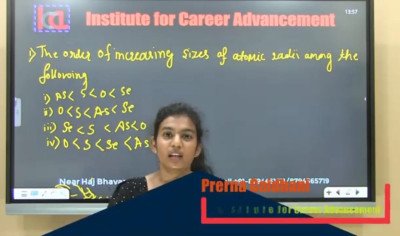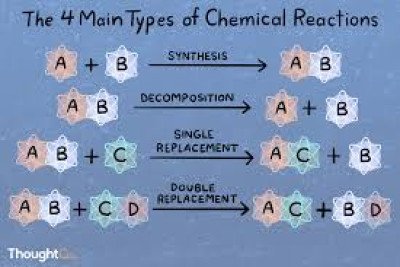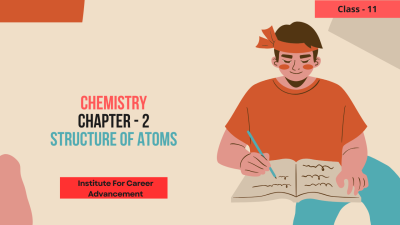Course description
The world around us is a symphony of matter, constantly changing and interacting. In "Some Basic Concepts of Chemistry" (Class 12), you'll embark on a journey to understand the fundamental building blocks of matter and the rules that govern their fascinating dance.
Demystifying Matter:
We'll begin by exploring the very essence of matter – anything that occupies space and has mass. You'll learn to differentiate between various states of matter (solid, liquid, gas) and their properties.
The Microscopic World: Atoms & Elements:
Get ready to shrink down to the atomic level! We'll delve into the concept of atoms – the tiniest, indivisible units of matter that make up all elements. You'll discover the fascinating structure of atoms, consisting of protons, neutrons, and electrons.
The Periodic Table: A Map of Elements:
This iconic table will be your guide as you explore the fascinating world of elements – the fundamental building blocks of all substances. We'll learn how elements are organized based on their properties and electronic configurations.
Unraveling the Atom's Structure:
Buckle up for a closer look! We'll explore the internal structure of atoms. You'll understand how protons and neutrons form the nucleus, while electrons occupy specific energy levels (orbitals) around the nucleus.
The Power of Bonds: Forming Molecules & Compounds:
Atoms don't exist in isolation! We'll explore how atoms interact with each other through chemical bonding – the force that holds atoms together to form molecules, the building blocks of compounds. You'll learn about different types of chemical bonds (ionic, covalent) and how they influence the properties of compounds.
Chemical Reactions: The Magic of Transformation:
Witness the wonders of chemical reactions! We'll explore how atoms rearrange themselves during chemical reactions to form new substances. You'll learn to balance chemical equations, representing these transformations accurately.
Beyond the Course:
Depending on your curriculum, you might delve deeper into specific areas like:
Mole concept – a powerful tool for quantifying matter in reactions
Stoichiometry – calculating the quantities of reactants and products in a reaction
Introduction to different types of chemical reactions (e.g., combustion, neutralization)
আমাদের চারপাশের বিশ্বটি পদার্থের একটি সিম্ফনি, ক্রমাগত পরিবর্তন এবং মিথস্ক্রিয়া। "রসায়নের কিছু মৌলিক ধারণা" (দ্বাদশ শ্রেণী)-তে আপনি পদার্থের মৌলিক গঠনমূলক উপাদানগুলি এবং তাদের আকর্ষণীয় নৃত্য পরিচালনাকারী নিয়মগুলি বোঝার জন্য একটি যাত্রা শুরু করবেন।
ডিমিস্টিফাইং ম্যাটারঃ
আমরা পদার্থের সারমর্ম অন্বেষণ করে শুরু করব-যে কোনও কিছু যা স্থান দখল করে এবং ভর রয়েছে। আপনি পদার্থের বিভিন্ন অবস্থা (কঠিন, তরল, গ্যাস) এবং তাদের বৈশিষ্ট্যগুলির মধ্যে পার্থক্য করতে শিখবেন।
দ্য মাইক্রোস্কোপিক ওয়ার্ল্ডঃ অ্যাটম অ্যান্ড এলিমেন্টস
পারমাণবিক স্তরে সঙ্কুচিত হওয়ার জন্য প্রস্তুত হন! আমরা পরমাণুর ধারণাটি অনুসন্ধান করব-পদার্থের ক্ষুদ্রতম, অবিভাজ্য একক যা সমস্ত উপাদান তৈরি করে। আপনি প্রোটন, নিউট্রন এবং ইলেকট্রন সমন্বিত পরমাণুর আকর্ষণীয় গঠন আবিষ্কার করবেন।
পর্যায় সারণিঃ উপাদানগুলির একটি মানচিত্রঃ
এই আইকনিক টেবিলটি আপনার পথপ্রদর্শক হবে যখন আপনি উপাদানগুলির আকর্ষণীয় জগৎ-সমস্ত পদার্থের মৌলিক বিল্ডিং ব্লকগুলি অন্বেষণ করবেন। আমরা শিখব কীভাবে উপাদানগুলি তাদের বৈশিষ্ট্য এবং বৈদ্যুতিন কনফিগারেশনের উপর ভিত্তি করে সংগঠিত হয়।
পরমাণুর কাঠামো উন্মোচনঃ
আরও ঘনিষ্ঠভাবে দেখার জন্য অপেক্ষা করুন! আমরা পরমাণুর অভ্যন্তরীণ কাঠামো অন্বেষণ করব। আপনি বুঝতে পারবেন কিভাবে প্রোটন এবং নিউট্রন নিউক্লিয়াস গঠন করে, যখন ইলেকট্রন নিউক্লিয়াসের চারপাশে নির্দিষ্ট শক্তির মাত্রা (অরবিটাল) দখল করে।
বন্ধনের শক্তিঃ অণু ও যৌগ গঠনঃ
পরমাণু বিচ্ছিন্নভাবে থাকে না! রাসায়নিক বন্ধনের মাধ্যমে পরমাণুগুলি কীভাবে একে অপরের সাথে মিথস্ক্রিয়া করে তা আমরা অন্বেষণ করব-যে শক্তি পরমাণুগুলিকে একত্রিত করে অণু গঠন করে, যৌগের বিল্ডিং ব্লক। আপনি বিভিন্ন ধরনের রাসায়নিক বন্ধন (আয়নিক, সমযোজী) এবং কীভাবে তারা যৌগের বৈশিষ্ট্যগুলিকে প্রভাবিত করে সে সম্পর্কে শিখবেন।
রাসায়নিক বিক্রিয়াঃ রূপান্তরের জাদু
রাসায়নিক বিক্রিয়ার বিস্ময় দেখুন! রাসায়নিক বিক্রিয়ার সময় পরমাণুগুলি কীভাবে নতুন পদার্থ গঠনের জন্য নিজেদের পুনর্বিন্যাস করে তা আমরা অন্বেষণ করব। এই রূপান্তরগুলিকে সঠিকভাবে উপস্থাপন করে আপনি রাসায়নিক সমীকরণগুলির মধ্যে ভারসাম্য বজায় রাখতে শিখবেন।
কোর্সের বাইরেঃ
আপনার পাঠ্যক্রমের উপর নির্ভর করে, আপনি নির্দিষ্ট ক্ষেত্রগুলিতে আরও গভীরভাবে অনুসন্ধান করতে পারেন যেমনঃ
মোল ধারণা-প্রতিক্রিয়ায় পদার্থের পরিমাণ নির্ধারণের জন্য একটি শক্তিশালী হাতিয়ার
Stoichiometry-একটি প্রতিক্রিয়া মধ্যে প্রতিক্রিয়াশীল এবং পণ্য পরিমাণ গণনা
বিভিন্ন ধরনের রাসায়নিক বিক্রিয়ার পরিচিতি (e.g., combustion, neutralization)



















